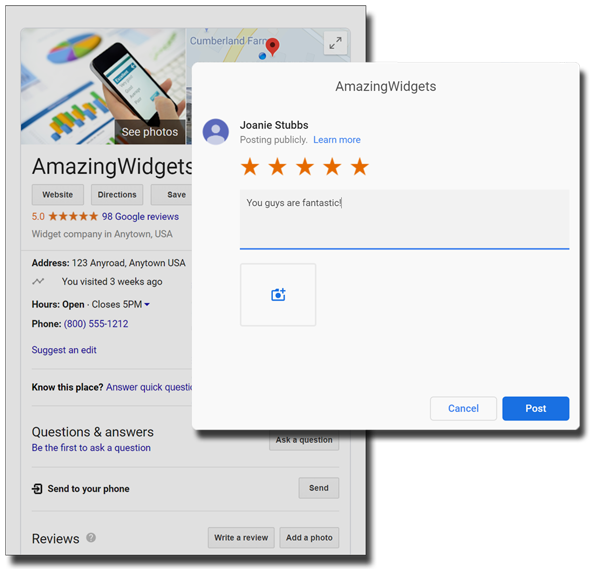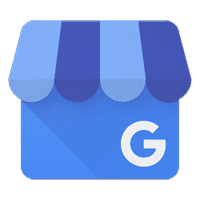June 2021
The Age of Listening

Photo by Mimi Thian on Unsplash
If you’ve ever seen the television program, Whose Line Is It Anyway?, it might seem as if what they do isn’t made up on the fly, and what they say must be scripted. With improvisation like that, there really is no script, and they have no idea what will happen. So how do they do it? They listen and they commit to what they’ve heard.
If you go on social media today, or watch the news, there seems to be a lot of people talking at each other out there, and not much listening. A lot of people seem to dismiss each other because they don’t agree. But like those actors, listening and committing to what you’ve heard can help you work together and be successful. You’ll stop dismissing good customer feedback and ideas that can help to improve your company, improve loyalty, and create Promoters.
Listening to customers allows you to learn how your customers like to be approached and the sales methods to which they are most receptive leading to customer retention. For example, if a customer likes to know how the sausage is made, you can embellish your communication with them to include the technical side of your services. If your customer is focused on results, you can communicate what they will receive when they work with you. You’ll find your interactions with customers will go smoothly and will build understanding and trust that will make them want to come back time and again.
Customer loyalty can be threatened when a customer relates a story or issue you’ve heard before leading you to start crafting a response, or worse, allowing yourself to think about other things while pretending to listen. People can tell they’re not being heard and may grow increasingly frustrated. Why would they return? When you speak to your Detractors, give them your full attention and directly address their concerns, repeating back what you heard to ensure you’ve understood. Wait until they’re finished before asking questions. They may tell you everything you need to know, thus saving time. This kind of interaction is memorable in a world where people often talk to people who don’t look at them, but a screen. They will remember you and want to work with you again.
When you receive customer feedback in LoyaltyLoop, consider what they are saying and what they’re not saying. How do you respond to the customer who says, “Joe sold me broken steel widgets on Sunday. I’m never going back.” But your name is Howard, and you sell plastic widgets on Mondays through Fridays. If you’re surveying this customer, and they gave feedback to the wrong company, you must share this customer with a competitor. It might be your instinct to discard the feedback and move on, but instead consider: Should you sell steel widgets? How much business have you been missing by being closed on Sundays? That customer isn’t going back to Joe’s, so there’s an opportunity to become his new widget supplier. If they’ve been surveyed, that customer didn’t buy from you. Have a look at your survey, do you need to make updates to your product listing?
Just by listening and understanding the way people communicate in general or when something has gone wrong, you can make a connection with your customers that will make them want to come back. They won’t just come back because of your services, but because of you.
One-time customers. You’ve seen them come and you’ve seen them go, and the brass ring is to get them to become lifelong customers; customers who not only make frequent purchases, but customers who recommend you. How can you get one-time customers coming back for regular purchases? Here are 6 methods you can use.
1. Maintain effective email communication.
Get their email. Once you have their email, you can provide a rolling calendar of information that can keep their interest in your business. You can send them your LoyaltyLoop survey, they can read your newsletters, and receive coupons. You not only want their business; you want a relationship. Effective email communications helps build this relationship.
2. Offer a smooth process for ordering and re-ordering.
Is there anything better than a quick and easy purchasing experience? 1. Insert card. 2. Beep. 3. You get your receipt and go. Make sure your purchase process is a smooth as it can possibly be. Offer easy methods for re-ordering, perhaps a re-order code on a receipt, or a method of re-ordering online.
3. Exceed expectations with customer service and support.
Don’t make your customers regret seeking out help. Educate your employees so they can sell and support all your products and services to reduce having to redirect their call. Telephone support is becoming more and more rare; don’t allow the phone to ring too long, and resolve issues as quickly as possible so your customers can resume their busy day. Stay friendly and understanding so your customer knows they’re in good hands, and say their name back to them when you thank them for calling.
4. Customization.
Use any information you have about your customer to personalize their experience. What other products might they want or need after making their first purchase? Any communication you have with them, make sure you have their name so you can address them directly instead of using impersonal greetings, such as “Valued Customer”. If you have their birthdate, take a cue from Chewy.com that sends birthday cards to pet owners on their pet’s birthday, and send a birthday card with personalized offers.
5. Offer a loyalty program.
When that one-time customer comes in, make sure they see you have a loyalty program. Anything that helps them realize the benefits of repeat purchases. For example, if they sign up, they could receive points towards a discount, or the classic sandwich punch card, “Buy 10 get one free!” These types of offers will allow you to collect an email for further communication and will encourage regular purchases.
6. Build relationships and be memorable.
Make sure your customer feels special and let them know they’re important to you. By sending them an invite to take your survey, you’re telling them their opinion is important to you and will improve your business. Have a presence on social media. Interact with customers on Twitter, be personable and funny that keeps you approachable. Consider one Burger King tweet: “No Reese’s Pie until you finish your homework. Just kidding, we don’t care.” If you sell physical products, another suggestion is the unboxing experience. What does your packaging look like? Is it easy to open? Have you put thought into the bag in which they carry their goods home?
Repeat customers spend more money, and it costs less to retain them than to get new people through the door. And if they keep coming back, they’re on the path to becoming Promoters when they can start doing the work of recommending you to others.
Maximizing Customer Reviews: Part 1 - The History of Reviews
From comment cards, to the Dot-Com Boom, to today.
Customer reviews as we know them are a relatively new phenomenon with the advent of the Internet. Prior to the Internet, companies would gather feedback from customers via comment cards, but this feedback was controlled by the company. They could release positive reviews as testimonials in their marketing, but the negative ones got filed away somewhere. The Internet changed everything – now any customer can post a review in a public forum for everyone to see.
The Dot-Com Boom in the late 1990’s spurred the advent of our modern-day review landscape. Expedia was started by Microsoft in 1996, TripAdvisor started in 2000 and Yelp in 2004. But the real pioneers were companies you might never have heard of – Deja, RateItAll, and Epinions. Over the years, these companies have all closed up shop or been gobbled up. Today, online customer reviews are dominated by Google, Facebook, Amazon, Yelp, and TripAdvisor, supplemented by industry-specific customer review websites.
What are customer reviews and why collect them?
A customer review is a comment posted by your customer on social media, customer review websites, or business listings. When you use your customer’s comments to endorse your products, customer reviews become customer testimonials.

Businesses collect reviews from current customers for two reasons:
- To garner more business from other customers.
- To analyze current business processes for improvement.
If you run a business, you can no longer ignore customer reviews and the impact they have on your business. Nearly nine out of ten (89 percent) consumers worldwide make the effort to read reviews before buying products (Trustpilot, 2020). Online customer reviews are here to stay for the foreseeable future. They influence your current and future customers as well as help you get found in search engines - helping the right customers find you.
In addition to garnering more business, customer reviews help you to analyze your current business processes and find areas for improvement. Negative reviews aren’t fun to read, but sometimes the customer really does know best. Online customer reviews help you to see the gaps in your business, which gives you the opportunity to improve – thereby attracting more customers and building a stronger brand!
Let’s dive into the world of customer review websites, customer satisfaction, and customer testimonials. Discover why customer reviews are valuable for your business and provide practical information you can use to leverage your customer feedback.
Can I post my testimonials on Google?

We recently received a question from a customer asking "Can I post my survey comments or testimonials as a Google review?" The short answer is no.
Your LoyaltyLoop service asks customers if they approve of you using their survey comments in your marketing. Many customers are comfortable giving you their approval. We call these "approved comments" Testimonials, and LoyaltyLoop provides the means for you to easily publish them to your websites and share with your social followers.
LoyaltyLoop Promoter plan also automatically encourages your customers to post a Google review. But not all customers are comfortable posting publicly on sites like Google and Facebook. Also, some companies have policies prohibiting their employees from making public posts or comments concerning their company.
Its important to remember that reviews you see on Google (or Facebook, Yelp, etc.) can only be posted by customers or anyone who has a Google account. Posted reviews are also 1 per person per business - Google allows the user to edit or delete their review (then repost), but they cannot leave multiple reviews for the same business. Reviewers can express anything they wish including facts or opinions, and can upload images. But only the customer reviewer can post a Google review. No third-party company, including your own business is permitted to post Google reviews.

Beware. It's a policy violation for a business to post about itself on Google due to the obvious conflict of interest. They also don’t like when employees or friends of the business post reviews, as they’re considered biased or dishonest. Unscrupulous third-party companies may offer to post reviews for you but stay clear. This can lead to having your Google account locked or banned.
Getting customers to post reviews is both a volume game and highly dependent on the make-up of your end customers. Volume is key - which is one of the reasons we often advise our customers to make sure LoyaltyLoop is engaging all the contacts who purchase from you.
Google provides some basic practices to help you navigate the volume game. Google writes:
- Verify your business. This ensures your business will be eligible to appear on Maps, Search, and other Google services. Only verified businesses can respond to reviews.
- Remind customers to leave reviews. Let them know that it’s quick and easy to leave business reviews on their mobile device or computer.
- Reply to reviews to build your customers' trust. Your customers will notice that your business values their input. If you read and reply to their reviews, customers may leave more reviews in the future.
It's also good to remember that we encourage connecting your LoyaltyLoop account to your Google My Business listing so you can take advantage of the tools LoyaltyLoop offers, such as reading and replying to new reviews, and being alerted when new reviews are posted.
Getting Google reviews is a good thing for your business – be sure to have everything in order to maximize your Google reviews.
Google My Business phases out short names

In the past Google allowed you to create short URLs so you could share a direct link to your business on Google Maps in the form of g.page/[business name] and if you appended "/review" to the end it would take your customers directly to the window so they could leave a review (https://g.page/loyaltyloop/review). This made it convenient to share the review link via email, business cards, posters, brochures, etc.
Search Engine Land reports Google has disabled the ability to create new links, even though existing links will remain active. For now.
If you don't currently use this method of distributing your business or review URL to your customers, and would like to set it up, consider using another URL shortening service, such as tinyurl.com. If you would like help obtaining your review URL so you can shorten it, contact us at support@loyaltyloop.com and we'll be more than glad to provide you with the link.
